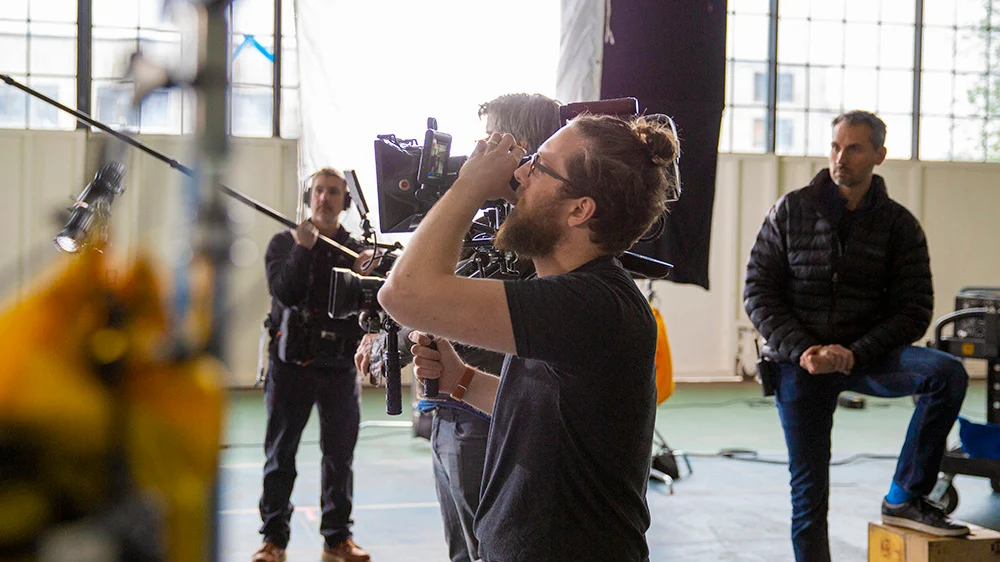Video production has evolved rapidly in the last few years. Higher resolutions, smarter autofocus, better low-light performance, and cinematic color science are now accessible to independent creators and enterprise teams alike. Whether you’re filming brand content, documentary interviews, social ads, or product explainers, the right gear stack helps you capture clean images, intelligible audio, and efficient workflows from set to post.
1) Cameras: Cinema, Mirrorless, and Specialty
- Digital Cinema Cameras (e.g., Super 35 / Full-Frame bodies) deliver robust codecs (ProRes, BRAW), high dynamic range, and professional I/O for multi-cam sets.
- Mirrorless/Hybrid Cameras excel for agile shoots, offering 10-bit internal recording, advanced autofocus, and compact rigs perfect for gimbal work.
- Specialty Cameras include action cams, 360°, drones, and box cams for tight spaces or aerials.
- Lenses: Fast primes for interviews and shallow depth of field; parfocal zooms for event coverage; macro lenses for product beauty shots.
Key considerations: color profiles/RAW options, rolling vs. global shutter, low-light performance, timecode sync, and overheating/record limits.
2) Audio: Capture Clean Dialogue First
Great video fails without great audio. Typical kits include:
- Shotgun Microphones on booms for directional pickup and natural tone.
- Lavalier Mics (wired/wireless) for interviews or presenters.
- On-Camera Mics for scratch/reference audio.
- Field Mixers/Recorders with 32-bit float and timecode for headroom and reliable sync.
- Headphones (closed-back) for on-set monitoring and noise troubleshooting.
Pro tip: record room tone; treat echoic rooms with portable sound blankets; always double-system record for backups.
3) Lighting: Shape, Soften, and Motivate
- LED COB Fixtures (daylight/bi-color) for key and hard sources; Bowens-mount modifiers add versatility.
- RGB Panels/Tube Lights for fills, practical accents, brand colors, and mood.
- Modifiers: softboxes, lanterns, grids, flags, and diffusion (216/250) to control contrast and spill.
- Light Meters and false color help nail exposure and skin tones consistently.
Look fundamentals: key-fill-back setup, motivated sources (matching practicals), and negative fill for shape.
4) Stabilization and Support
- Tripods/Fluid Heads for locked-off frames and smooth pans/tilts.
- Gimbals for dynamic movement shots.
- Sliders/Dollies for controlled parallax.
- C-Stands/Grip (arms, knuckles, clamps) to rig lights, flags, and safety.
Rigging safely (sandbags, safety cables) protects crew and gear.
5) Monitoring, Power, and On-Set Data
- External Monitors/Recorders with waveform, vectorscope, LUTs, and focus peaking.
- Wireless Video Systems to send feeds to director/client village.
- Battery Ecosystems (V-mount/Gold mount) and D-tap distribution for all-day power.
- Media & DIT: fast SD/CFexpress/SSD, checksum offloads (e.g., 3-2-1 backup rule), on-set proxies for quick edits.
6) Post-Production: From Ingest to Master
- Editing Software for multi-cam sync, trimming, and timeline management.
- Color Grading with control surfaces, calibrated monitors, and reference scopes.
- Audio Post: noise reduction, EQ, compression, mixing, and loudness compliance.
- Graphics & VFX for titles, lower thirds, motion design, and compositing.
- Delivery Pipelines: social aspect ratios, broadcast specs, captions, and language versions.
7) Collaboration & Remote Review
Cloud review links, version control, frame-accurate comments, and shared proxy workflows speed approvals—vital for agencies, distributed teams, and fast-turn social.
8) Emerging Tech to Watch
- Virtual Production/LED Volumes for controlled environments and rapid location swaps.
- AI Assist Tools for noise reduction, transcription, captioning, rough cuts, and color matching.
- IP Video & NDI for live/hybrid events and multi-cam streaming setups.
Trusted Full-Stack Partner
Teams that want end-to-end quality often work with specialists like Base Bin video production, bringing cameras, lights, audio, crew, and post under one roof—so creative, technical, and timeline goals align from brief to final master.
Building a Practical Kit: Three Tiers
Starter (Agile Social/Corporate):
- Hybrid mirrorless body, 24-70mm zoom, variable ND
- Shotgun + wireless lav kit, 2-channel recorder
- One bi-color LED with softbox, compact reflector
- Travel tripod, small gimbal, 5-inch monitor
Pro (Commercial/Documentary):
- Cinema camera (ProRes/RAW), prime set + cine zoom
- Dual wireless lavs, shotgun on boom, 32-bit recorder with timecode
- 2–3 COB LEDs + RGB tubes, flags, diffusion, light meter
- Gimbal, slider, wireless video, V-mount power, on-set DIT backups
Studio/Advanced:
- Multi-cam cinema setup with genlock/timecode
- LED volume or large soft key systems, DMX lighting control
- Director/client monitors, video village, dedicated DIT cart
- Full audio bag with IFB, plant mics, and multitrack recording
How to Choose the Right Gear for Your Shoot
- Define the deliverable (platforms, aspect ratios, deadlines).
- Match look to story (lens choices, lighting style, color pipeline).
- Prioritize sound (dialogue clarity over everything).
- Plan data & backups (checksum, proxies, archive).
- Leave margin (extra batteries, cards, cables, sandbags).
Final Thoughts
Modern video production blends robust cameras, carefully shaped light, pristine audio, and disciplined data practices with collaborative post. The “best” gear isn’t always the most expensive—it’s the kit that fits your story, crew size, and delivery timeline. If you align creative goals with the right equipment and workflow, you’ll capture cleaner footage, speed approvals, and ship stronger content across every platform.

